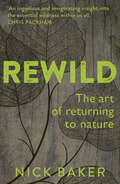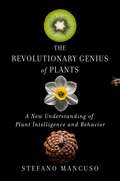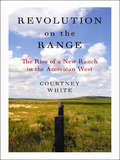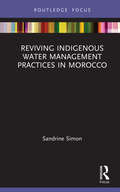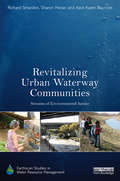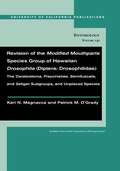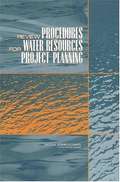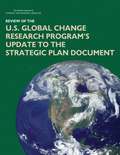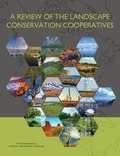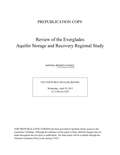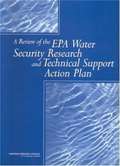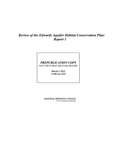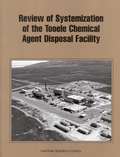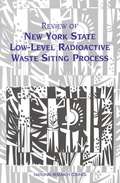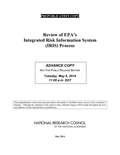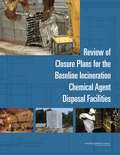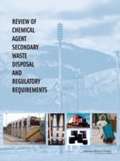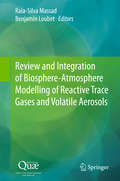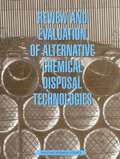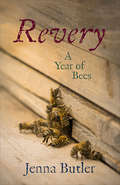- Table View
- List View
Rewild Your Mind: Use nature as your guide to a happier, healthier life
by Nick GoldsmithRewild Your Mind shows you how to connect with nature to be happier, healthier and more at peace with the world around you. Packed with wilderness skills and traditional crafts – from fixing a hammock in the woods and foraging for hedgerow medicine to finding moments of 'wild' in the everyday – this unique book enables readers to boost their wellbeing through getting outside. It is an invitation to reset, recharge and 'rewild' yourself. Weaved through the book is Nick Goldsmith's personal story of using nature to aid his recovery from PTSD. After several tours serving as a Royal Marine Commando in Afghanistan, Nick was left in a dark and desperate place. He tried conventional therapies but found true solace amongst nature, and now enables others to do the same.
Rewild Your Mind: Use nature as your guide to a happier, healthier life
by Nick GoldsmithRewild Your Mind shows you how to connect with nature to be happier, healthier and more at peace with the world around you. Packed with wilderness skills and traditional crafts – from fixing a hammock in the woods and foraging for hedgerow medicine to finding moments of 'wild' in the everyday – this unique book enables readers to boost their wellbeing through getting outside. It is an invitation to reset, recharge and 'rewild' yourself. Weaved through the book is Nick Goldsmith's personal story of using nature to aid his recovery from PTSD. After several tours serving as a Royal Marine Commando in Afghanistan, Nick was left in a dark and desperate place. He tried conventional therapies but found true solace amongst nature, and now enables others to do the same.
Rewild Your Garden: Create a Haven for Birds, Bees and Butterflies
by Frances Tophill'A refreshing, uplifting and positive look at the true value of a garden.' -- Alan TitchmarshThe perfect book for any gardener looking to get back in touch with their wild side.The rewilding of public spaces and farmland is vitally important to conservation, but how can we support native species and provide rich habitats on our own doorsteps?In this practical, beautifully illustrated guide horticulturalist and Gardener's World presenter Frances Tophill shows you how to plan and maintain a beautiful garden that will attract bees and birds as well as a throng of unsung garden heroes. Whether you have a small balcony or a large open space, discover the joys of welcoming natural ecosystems back into your garden - along with a host of new visitors.
ReWild: The Art of Returning to Nature
by Nick BakerAs our busy, technology-driven lives become more sedentary and less connected to wildlife, it is important to remember the natural, human connection we have to the wilderness.Nick Baker, naturalist and wildlife presenter, takes the reader back to our natural instincts. Journeying through the senses, his expert advice offers the practical tools to experience the wilderness on your own doorstop as well as in the wider, wilder world. From learning to observe the creatures and beasts within hands&’ reach and seeing and hearing the birds and trees of our forests, to an introduction to rewilding as a concept and the importance nature has to the wider world. Nick's vivid text mixes memoir with practical advice to entertain, inform and inspire us to get back to nature. ReWild is a beautiful and important exploration of the art of returning to nature.
The Revolutionary Genius of Plants: A New Understanding of Plant Intelligence and Behavior
by Stefano Mancuso"In this thought-provoking, handsomely illustrated book, Italian neurobiologist Stefano Mancuso considers the fundamental differences between plants and animals and challenges our assumptions about which is the &‘higher&’ form of life.&” —The Wall Street Journal&“Fascinating…full of optimism…this quick, accessible read will appeal to anyone with interest in how plants continue to surprise us.&” —Library JournalDo plants have intelligence? Do they have memory? Are they better problem solvers than people? The Revolutionary Genius of Plants—a fascinating, paradigm-shifting work that upends everything you thought you knew about plants—makes a compelling scientific case that these and other astonishing ideas are all true.Plants make up eighty percent of the weight of all living things on earth, and yet it is easy to forget that these innocuous, beautiful organisms are responsible for not only the air that lets us survive, but for many of our modern comforts: our medicine, food supply, even our fossil fuels. On the forefront of uncovering the essential truths about plants, world-renowned scientist Stefano Mancuso reveals the surprisingly sophisticated ability of plants to innovate, to remember, and to learn, offering us creative solutions to the most vexing technological and ecological problems that face us today. Despite not having brains or central nervous systems, plants perceive their surroundings with an even greater sensitivity than animals. They efficiently explore and react promptly to potentially damaging external events thanks to their cooperative, shared systems; without any central command centers, they are able to remember prior catastrophic events and to actively adapt to new ones. Every page of The Revolutionary Genius of Plants bubbles over with Stefano Mancuso&’s infectious love for plants and for the eye-opening research that makes it more and more clear how remarkable our fellow inhabitants on this planet really are. In his hands, complicated science is wonderfully accessible, and he has loaded the book with gorgeous photographs that make for an unforgettable reading experience. The Revolutionary Genius of Plants opens the doors to a new understanding of life on earth.
Revolution on the Range: The Rise of a New Ranch in the American West
by Courtney WhiteIn the final decade of the twentieth century, the American West was at war. Battle lines had hardened, with environmentalists squarely on one side of the fence, and ranchers on the other. By the mid-1990s, debates over the region's damaged land had devolved into political wrangling, bitter lawsuits, and even death-threats. Conventional wisdom told us those who wanted to work the land and those who wanted to protect it had fundamentally different--and irreconcilable--values. In Revolution on the Range, Courtney White challenges that truism, heralding stories from a new American West where cattle and conservation go hand in hand. He argues that ranchers and environmentalists have more in common than they've typically admitted: a love of wildlife, a deep respect for nature, and a strong allergic reaction to suburbanization. The real conflict has not been over ethics, but approaches. Today, a new brand of ranching is bridging the divide by mimicking nature while still turning a profit. Westerners are literally reinventing the ranch by confronting their own assumptions about nature, profitability, and each other. Ranchers are learning that new ideas can actually help preserve traditional lifestyles. Environmentalists are learning that protected landscapes aren't always healthier than working ones. White, a self-proclaimed middle-class city boy, has learned there's more to ranching than grit and cowboy boots. The author's own transformation from conflict-oriented environmentalist to radical centrist mirrors the change sweeping the region. As ranchers and environmentalists find common cause, they're discovering new ways to live on--and preserve--the land they both love. Revolution on the Range is the story of that journey, and a heartening vision of the new American West.
Reviving Indigenous Water Management Practices in Morocco: Alternative Pathways to Sustainable Development (Earthscan Studies in Water Resource Management)
by Sandrine SimonThis book demonstrates how Morocco and other semi-arid countries can find solutions to water scarcity by rediscovering traditional methods of water resource management. The book begins by examining indigenous water heritage, considering the contribution of Islam and the mixed influences of Greek and Roman, Middle Eastern, Andalusian and Berber cultures. It then provides a thorough examination of resource management practices in Morocco throughout history, tracing the changing patterns from the instillation of agrarian capitalism in the 19th century, through the Protectorate years (1912–1956), to the 21st century. The book explains how reviving and modernizing traditional methods of water management could provide simple, accessible, and successful methods for addressing 21st century challenges, such as water scarcity and climate change. The work concludes by highlighting how these indigenous practices might be used to provide real-world practical solutions for improving water governance and therefore developing sustainable water management practices. Reviving Indigenous Water Management Practices in Morocco will be of great interest to students and scholars interested in water resource management, indigenous peoples, traditional knowledge, and sustainable development.
Revitalizing Urban Waterway Communities: Streams of Environmental Justice (Earthscan Studies in Water Resource Management)
by Richard Smardon Sharon Moran April Karen BaptisteThe revitalizing and restoration of rivers, creeks and streams is a major focus of urban conservation activity throughout North America and Europe. This book presents models and examples for organizing multiple stakeholders for purposes of waterway revitalization—if not restoration—within a context of fairness and environmental justice. After decades of neglect and misuse the challenge of cleaning up urban rivers and streams is shown to be complex and truly daunting. Urban river cleanup typically involves multiple agendas and stakeholders, as well as complicated technical issues. It is also often the situation that the most affected have the least voice in what happens. The authors present social process models for maximum inclusion of various stakeholders in decision-making for urban waterway regeneration. A range of examples is presented, drawn principally from North America and Europe.
Revision of the Modified Mouthparts Species Group of Hawaiian Drosophila (Diptera: Drosophilidae)
by Karl N. Magnacca Patrick M. O'GradyThe modified mouthparts group is perhaps the largest of the four major Hawaiian Drosophila clades, yet has received relatively little taxonomic attention during the past 40 years. This study reviews unplaced species and the ceratostoma, freycinetiae, semifuscata, and setiger subgroups, with descriptions of 22 new species. We hope this work encourages greater study of the biology of this important group.
Review Procedures for Water Resources Project Planning
by National Research CouncilA Review Procedures For Water Resources Project Planning
A Review of the Use of Science and Adaptive Management in California's Draft Bay Delta Conservation Plan
by Water Science Technology BoardThe San Francisco Bay Delta Estuary is a large, complex estuarine ecosystem in California. It has been substantially altered by dikes, levees, channelization, pumps, human development, introduced species, dams on its tributary streams and contaminants. The Delta supplies water from the state's wetter northern regions to the drier southern regions and also serves as habitat for many species, some of which are threatened and endangered. The restoration of water exacerbated tensions over water allocation in recent years, and have led to various attempts to develop comprehensive plans to provide reliable water supplies and to protect the ecosystem. One of these plans is the Bay Delta Conservation Plan (BDCP). The report, A Review of the Use of Science and Adaptive Management in California's Draft Bay Delta Conservation Plan, determines that the plan is incomplete in a number of important areas and takes this opportunity to identify key scientific and structural gaps that, if addressed, could lead to a more successful and comprehensive final BDCP. The plan is missing the type of structure usually associated with current planning methods in which the goals and objectives are specified, alternative measure for achieving the objectives are introduced and analyzed, and a course of action in identified based on analytical optimization of economic, social, and environmental factors. Yet the panel underscores the importance of a credible and a robust BDCP in addressing the various water management problems that beset the Delta. A stronger, more complete, and more scientifically credible BDCP that effectively integrates and utilizes science could indeed pave the way toward the next generation of solutions to California's chronic water problems.
Review of the U.S. Global Change Research Program’s Update to the Strategic Plan Document
by National Academies of Sciences Engineering MedicineThe Update to the Strategic Plan (USP) is a supplement to the Ten-Year Strategic Plan of the U.S. Global Change Research Program (USGCRP) completed in 2012. The Strategic Plan sets out a research program guiding thirteen federal agencies in accord with the Global Change Research Act of 1990. This report reviews whether USGCRP’s efforts to achieve its goals and objectives, as documented in the USP, are adequate and responsive to the Nation’s needs, whether the priorities for continued or increased emphasis are appropriate, and if the written document communicates effectively, all within a context of the history and trajectory of the Program.
A Review of the Landscape Conservation Cooperatives
by National Academies of Sciences Engineering MedicineThe United States' tradition of conserving fish, wildlife, habitats, and cultural resources dates to the mid-19th century. States have long sought to manage fish and wildlife species within their borders, whereas many early federal conservation efforts focused on setting aside specific places as parks, sanctuaries, or reserves. With advances in landscape ecology over the past quarter-century, conservation planners, scientists, and practitioners began to stress the importance of conservation efforts at the scale of landscapes and seascapes. These larger areas were thought to harbor relatively large numbers of species that are likely to maintain population viability and sustain ecological processes and natural disturbance regimes - often considered critical factors in conserving biodiversity. By focusing conservation efforts at the level of whole ecosystems and landscape, practitioners can better attempt to conserve the vast majority of species in a particular ecosystem. Successfully addressing the large-scale, interlinked problems associated with landscape degradation will necessitate a planning process that bridges different scientific disciplines and across sectors, as well as an understanding of complexity, uncertainty, and the local context of conservation work. The landscape approach aims to develop shared conservation priorities across jurisdictions and across many resources to create a single, collaborative conservation effort that can meet stakeholder needs. Conservation of habitats, species, ecosystem services, and cultural resources in the face of multiple stressors requires governance structures that can bridge the geographic and jurisdictional boundaries of the complex socio-ecological systems in which landscape-level conservation occurs. The Landscape Conservation Cooperatives (LCC) Network was established to complement and add value to the many ongoing state, tribal, federal, and nongovernmental efforts to address the challenge of conserving species, habitats, ecosystem services, and cultural resources in the face of large-scale and long-term threats, including climate change. A Review of the Landscape Conservation Cooperatives evaluates the purpose, goals, and scientific merits of the LCC program within the context of similar programs, and whether the program has resulted in measurable improvements in the health of fish, wildlife, and their habitats.
Review of the Everglades Aquifer Storage and Recovery Regional Study
by Committee to Review the Florida Aquifer Storage Recover Regional Study Technical Data ReportThe Florida Everglades is a large and diverse aquatic ecosystem that has been greatly altered over the past century by an extensive water control infrastructure designed to increase agricultural and urban economic productivity. The Comprehensive Everglades Restoration Plan (CERP), launched in 2000, is a joint effort led by the state and federal government to reverse the decline of the ecosystem. Increasing water storage is a critical component of the restoration, and the CERP included projects that would drill over 330 aquifer storage and recovery (ASR) wells to store up to 1. 65 billion gallons per day in porous and permeable units in the aquifer system during wet periods for recovery during seasonal or longer-term dry periods. To address uncertainties regarding regional effects of large-scale ASR implementation in the Everglades, the U. S. Army Corps of Engineers (USACE) and the South Florida Water Management District conducted an 11-year ASR Regional Study, with focus on the hydrogeology of the Floridan aquifer system, water quality changes during aquifer storage, possible ecological risks posed by recovered water, and the regional capacity for ASR implementation. At the request of the USACE, "Review of the Everglades Aquifer Storage and Recovery Regional Study" reviews the ASR Regional Study Technical Data Report and assesses progress in reducing uncertainties related to full-scale CERP ASR implementation. This report considers the validity of the data collection and interpretation methods; integration of studies; evaluation of scaling from pilot-to regional-scale application of ASR; and the adequacy and reliability of the study as a basis for future applications of ASR.
A Review of the EPA Water Security Research and Technical Support Action Plan
by Panel on Water System Security ResearchThe report examines a draft plan, prepared by the Environmental Protection Agency, that identifies critical security issues for drinking water and wastewater and outlines related research and technical support needs. This report recommends increased attention to interagency coordination and encourages additional consideration of current restrictions on secure information dissemination. It further suggests that EPA incorporate the results of their research activities into an integrated water security guidance document to improve support for water and wastewater utilities.
Review of the Edwards Aquifer Habitat Conservation Plan: Report 1
by Committee to Review the Edwards Aquifer Habitat Conservation PlanThe Edwards Aquifer in south-central Texas is the primary source of water for one of the fastest growing cities in the United States, San Antonio, and it also supplies irrigation water to thousands of farmers and livestock operators. It is also is the source water for several springs and rivers, including the two largest freshwater springs in Texas that form the San Marcos and Comal Rivers. The unique habitat afforded by these spring-fed rivers has led to the development of species that are found in no other locations on Earth. Due to the potential for variations in spring flow caused by both human and natural causes, these species are continuously at risk and have been recognized as endangered under the federal Endangered Species Act (ESA). In an effort to manage the river systems and the aquifer that controls them, the Edwards Aquifer Authority and stakeholders have developed a Habitat Conservation Plan (HCP). The HCP seeks to effectively manage the river-aquifer system to ensure the viability of the ESA-listed species in the face of drought, population growth, and other threats to the aquifer. The National Research Council was asked to assist in this process by reviewing the activities around implementing the HCP. "Review of the Edwards Aquifer Habitat Conservation Plan: Report 1" is the first stage of a three-stage study. This report reviews the scientific efforts that are being conducted to help build a better understanding of the river-aquifer system and its relationship to the ESA-listed species. These efforts, which include monitoring and modeling as well as research on key uncertainties in the system, are designed to build a better understanding of how best to manage and protect the system and the endangered species. Thus, the current report is focused specifically on a review of the hydrologic modeling, the ecological modeling, the water quality and biological monitoring, and the Applied Research Program. The fundamental question that "Review of the Edwards Aquifer Habitat Conservation Plan: Report 1" addresses is whether the scientific initiatives appropriately address uncertainties and fill knowledge gaps in the river-aquifer system and the species of concern. It is hoped that the successful completion of these scientific initiatives will ultimately lead the Edwards Aquifer Authority to an improved understanding of how to manage the system and protect these species.
Review of Systemization of the Tooele Chemical Agent Disposal Facility
by Committee on Review Evaluation of the Army Chemical Stockpile Disposal ProgramIn 1993, at Tooele Army Depot, Utah, the Army completed construction of the Tooele Chemical Agent Disposal Facility (TOCDF), the first complete facility for destruction of lethal unitary chemical agents and munitions to be built in the continental United States. The TOCDF will employ the Army's baseline incineration system to destroy the depot's increment of the nation's aging unitary chemical stockpile. This book assesses Army changes and improvements to the TOCDF in response to recommendations contained in earlier reports of the committee. It assesses aspects of the facility's readiness for safe agent handling and destruction operations, its agent monitoring system, and its site specific risk assessment.
Review of Proposals to the Bureau of Land Management on Wild Horse and Burro Sterilization or Contraception: A Letter Report
by Committee for the Review of Proposals to the Bureau of Land Management on Wild Horse Burro Sterilization or ContraceptionAs a follow-up to the 2013 report Using Science to Improve the Wild Horse and Burro Program: A Way Forward, this letter report reviews research project proposals submitted to the Bureau of Land Management and aimed at developing new or refining existing techniques and establishing protocols for the contraception or permanent sterilization of either male or female wild horses and/or burros in the field. Review of Proposals to the Bureau of Land Management on Wild Horse and Burro Sterilization or Contraception considers factors related to the scientific validity of the proposed technique(s), goals and objectives of the work, research methodology and design of the study, proposed statistical analysis and interpretation of anticipated data obtained, animal welfare implications and Institutional Animal Care and Use Committee approvals, feasibility, as well as the qualifications, expertise, and experience of the investigators. This report ranks the proposals in order of merit and provides a brief report on additional factors for the Bureau of Land Management to consider in selecting proposals to fund.
Review of New York State Low-Level Radioactive Waste Siting Process
by Committee to Review New York State's Siting Methodology Selection for Low-Level Radioactive Waste DisposalThis book reviews the efforts of New York state to site a low-level radioactive waste disposal facility. It evaluates the nature, sources, and quality of the data, analyses, and procedures used by the New York State Siting Commission in its decisionmaking process, which identified five potential sites for low-level waste disposal. Finally, the committee offers a chapter highlighting the lessons in siting low-level radioactive waste facilities that can be learned from New York State's experience.
Review of EPA's Integrated Risk Information System (IRIS) Process
by Committee to Review the IRIS ProcessThe Integrated Risk Information System (IRIS) is a program within the US Environmental Protection Agency (EPA) that is responsible for developing toxicologic assessments of environmental contaminants. An IRIS assessment contains hazard identifications and dose-response assessments of various chemicals related to cancer and noncancer outcomes. Although the program was created to increase consistency among toxicologic assessments within the agency, federal, state, and international agencies and other organizations have come to rely on IRIS assessments for setting regulatory standards, establishing exposure guidelines, and estimating risks to exposed populations. Over the last decade, the National Research Council (NRC) has been asked to review some of the more complex and challenging IRIS assessments, including those of formaldehyde, dioxin, and tetrachloroethylene. In 2011, an NRC committee released its review of the IRIS formaldehyde assessment. Like other NRC committees that had reviewed IRIS assessments, the formaldehyde committee identified deficiencies in the specific assessment and more broadly in some of EPA's general approaches and specific methods. Although the committee focused on evaluating the IRIS formaldehyde assessment, it provided suggestions for improving the IRIS process and a roadmap for its revision in case EPA decided to move forward with changes to the process. Congress directed EPA to implement the report's recommendations and then asked the National Research Council to review the changes that EPA was making (or proposing to make) in response to the recommendations. "Review of EPA's Integrated Risk Information System (IRIS) Process" provides an overview of some general issues associated with IRIS assessments. This report then addresses evidence identification and evaluation for IRIS assessments and discusses evidence integration for hazard evaluation and methods for calculating reference values and unit risks. The report makes recommendations and considerations for future directions. Overall, "Review of EPA's Integrated Risk Information System Process" finds that substantial improvements in the IRIS process have been made, and it is clear that EPA has embraced and is acting on the recommendations in the NRC formaldehyde report. The recommendations of this report should be seen as building on the progress that EPA has already made.
Review of Closure Plans for the Baseline Incineration Chemical Agent Disposal Facilities
by National Research Council of the National AcademiesThis book responds to a request by the director of the U.S. Army Chemical Materials Agency (CMA) for the National Research Council to examine and evaluate the ongoing planning for closure of the four currently operational baseline incineration chemical agent disposal facilities and the closure of a related testing facility. The book evaluates the closure planning process as well as some aspects of closure operations that are taking place while the facilities are still disposing of agent. These facilities are located in Anniston, Alabama; Pine Bluff, Arkansas; Tooele, Utah; and Umatilla, Oregon. They are designated by the acronyms ANCDF, PBCDF, TOCDF, and UMCDF, respectively. Although the facilities all use the same technology and are in many ways identical, each has a particular set of challenges.
Review Of Chemical Agent Secondary Waste Disposal And Regulatory Requirements
by National Research Council of the National AcademiesUnder the direction of the U.S. Army's Chemical Materials Agency (CMA) and mandated by Congress, the nation is destroying its chemical weapons stockpile. Large quantities of secondary waste are being generated in the process, and managing these wastes safely and effectively is a critical part of CMA's weapons disposal program. To assist, the CMA asked the NRC to examine the environmental and regulatory requirements that secondary waste treatment is subject to, and to assess best practices by industry in meeting such requirements for similar facilities. This book presents an overview of secondary wastes from chemical agent disposal facilities (CDF), a comparison of CDF and industry experience, site-specific analysis of major secondary waste issues, an examination of closure wastes, and findings and recommendations.
Review and Integration of Biosphere-Atmosphere Modelling of Reactive Trace Gases and Volatile Aerosols
by Raia-Silva Massad Benjamin LoubetWhen considering biosphere-atmosphere exchange of trace gases and volatile aerosols, significant advances have been made both from an experimental and modelling point of view and on several scales. This was particularly stimulated by the availability of new datasets generated from improvements in analytical methods and flux measurement techniques. Recent research advances allow us, not only to identify major mechanisms and factors affecting the exchanges between the biosphere and the atmosphere, but also to recognize several gaps in the methodologies used in accounting for emissions and deposition in landscape and global scale models. This work aims at (i) reviewing exchange processes and modelling schemes, parameterisations and datasets, (ii) presenting a common conceptual framework to model soil-vegetation-atmosphere exchange of reactive trace gases and aerosols accounting for in-canopy transfer chemical interactions and (iii) discussing the key elements of the agreed framework.
Review and Evaluation of Alternative Chemical Disposal Technologies
by National Research CouncilIn 1994 the National Research Council published Recommendations for the Disposal of Chemical Agents and Munitions, which assessed the status of various alternative destruction technologies in comparison to the Army's baseline incineration system. The volume's main finding was that no alternative technology was preferable to incineration but that work should continue on the neutralization technologies under Army consideration.In light of the fact that alternative technologies have evolved since the 1994 study, this new volume evaluates five Army-chosen alternatives to the baseline incineration system for the disposal of the bulk nerve and mustard agent stored in ton containers at Army sites located in Newport, Indiana, and Aberdeen, Maryland, respectively. The committee assessed each technology by conducting site visits to the locations of the technology proponent companies and by meeting with state regulators and citizens of the affected areas. This volume makes recommendations to the Army on which, if any, of the five technologies has reached a level of maturity appropriate for consideration for pilot-scale testing at the two affected sites.
Revery: A Year of Bees
by Jenna ButlerI hope you're okay in there, lovelies. I hope you're warm. After five years of working with bees on her farm in northern Alberta, Jenna Butler shares with the reader the rich experience of keeping hives. Starting with a rare bright day in late November as the bees are settling in for winter she takes us through a year in beekeeping on her small piece of the boreal forest. Weaving together her personal story with the practical aspects of running a farm, she takes us into the worlds of honeybees and wild bees. She considers the twinned development of the canola and honey industries in Alberta and the impact of crop sprays, debates the impact of introduced flowers versus native flowers, the effect of colony collapse disorder, and the protection of natural environments for wild bees. This is also the story of women and bees, and how beekeeping became Jenna Butler's personal survival story.


